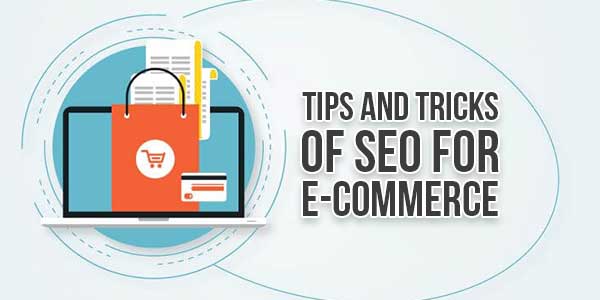
The popularity of eCommerce has exploded during the past five years. Acquiring new clients at a decent rate became more challenging for online shops since acquisition expenditures increased at the same time.
E-commerce marketers must rely on low-cost, high-volume channels in such a competitive environment. A well-known example of one that has been shown to be effective for years is SEO.
The nine e-commerce SEO pointers in this post can help you increase visitors.
Table of Contents
1.) Make A Thorough Keyword Strategy:
Google has a challenging task; every second, it must provide relevant search results to over 80,000 people. Their business, which depends on their excellent search results, may suffer if they deliver poor results. Google must choose the websites that best satisfy each search result’s user’s purpose, which may be ascertained from the user’s search query. The user’s search terms are referred to as “keywords” in the realm of SEO.
Depending on the goal of the user, SEO professionals have divided keywords into three general categories for decades:
- Commercial keywords: expressions like “buy protein powder,” “protein powder coupon,” and “protein powder pricing” suggest a desire to acquire a product.
- Informational keywords: “how to utilize protein powder,” “protein powder advice,” and “protein powder tutorial” are examples of keywords that suggest the urge to learn more about a certain topic.
- Navigational keywords: are those that refer to a particular service, company, or place, such as “GNC shop” or “optimum nutrition.”
Over 80% of all searches are informative, 10% are navigational, and 10% are transactional, according to one survey.
A certain approach to going up in Google’s search results is to aid the company in delivering the greatest results to its consumers’ search queries. For this reason, you want to display the sites that are most pertinent to each keyword that your clients enter. And that gets us to the first e-commerce SEO advice, which is to create a thorough keyword strategy. Start by connecting your online store to SEMrush, Ahrefs, or Moz, three popular keyword research tools. Repeat the process for at least three of your top rivals after exporting the keywords.
With all this information, you should:
- Give each keyword a category. To indicate if a term is commercial, informative, or navigational, add a column to your spreadsheet.
- Highlight the keywords used by your rivals. You’ll discover that your rivals’ stores are ranked for search terms that aren’t relevant to yours; make a separate tab for those terms so you can ultimately target them.
- Sort them according to CPC and volume. Targeting keywords with a mix of high volume and high CPC can help you boost sales while the former will ensure more traffic (after you rank for them).
Finally, you need to rank your opportunities.
There will be keywords that seem appealing but are difficult or unfeasible to rank for. There are several approaches for keyword prioritizing that you may utilize; some concentrate on volume, others on conversions, and so on.
Choose the one that most closely matches your interests, and then begin optimizing your pages in response to the findings.
2.) Optimize With Purpose:
When you begin optimizing your pages, you should pay great attention to the purpose of your keywords because Google believes that a page’s relevancy is essential to providing its visitors with the best experience possible. What, though, is “intent”?
The more your reward, the better your website performs for Google users (i.e., the more traffic you will get).
You have two choices for identifying a search intent:
- Investigate their nature. As previously said, keywords frequently make their intended use clear in their names; for example, keywords with the phrases “purchase” or “coupon” are commercial, but those with the terms “how to” or “tutorial” are instructional.
- Examine CPC. The demand for a keyword affects its cost-per-click (CPC), with more demand (i.e., more advertisers bidding for it) resulting in higher prices. Demand for a keyword is typically determined by its profitability. As a result, commercial keywords with high CPC typically convert better.
Enter your online store’s URL in an SEO tool like Nightwatch to see which keywords you are already ranking for. Note the CPC and the words that are shown. Then, as you optimize your pages, you should incorporate your chosen keywords in:
- Page heading. It ranks among the most potent local forces.
- Copy. On your page, repeat the term numerous times.
To determine the ideal keyword density, use a program like TextOptimizer (i.e., the number of times you mention a keyword on a page).
3.) Address Usability Problems:
Online shopping is now exceedingly simple thanks to e-commerce behemoths like Amazon and Zappos. Consumers now anticipate a seamless purchasing experience, which has raised their expectations.
Sadly, a lot of online shops still provide a poor user experience (UX), including unclear design components, challenging checkout procedures, and more.
- URL. Another important element in on-site SEO is the URL. If a page has already been published, think about using a 301 redirect.
- Alt-Tag. Include your keyword in the alt-tag of your image so that Google can comprehend what the image is about.
- Links inside. Use your keywords as the anchor text in links to the pages of your website. What about a circumstance where everyone benefits?
You may monitor visitor behaviour to improve your UX by using the following tools:
- tools for recording sessions. These will track a random sample of customers and display everything they do while they are in your shop.
- tools for quantitative analysis. Check the pages with the greatest departure rates—those where customers leave the most frequently.
- tools for qualitative analytics. Utilizing online feedback forms, you may inquire about the experience of your visitors.
In case you are having trouble, contact an expert virtual assistant for help.
4.) Utilize HTTPS:
One of the many elements that affect how your visitors use your website is usability. Another important factor that you must not ignore is security; as you just saw, it is important for traffic and conversion.
The primary protocol for exchanging data between a user’s browser and a store’s server is HTTP or Hypertext Transfer Protocol. HTTPS, or Hypertext Transfer Protocol Secure, is the secure version of HTTP.
For communication, data transmission, and financial transactions, HTTPS promotes a secure environment. Google said in 2014 that including an SSL 2048-bit key certificate on a website would have little impact on its ranking. When two separate search results fight for a position, HTTPS acts as a tie-breaker, according to a Google engineer’s statement from a year later. Using HTTPS is a simple and affordable e-commerce SEO advice to improve the speed of your shop.
After pointing a domain to their platform, all e-commerce companies have made it simple to add an HTTPS protocol to the domain. The user manuals for three of the biggest e-commerce platforms are as follows:
- Shopify BigCommerce Squarespace

5.) Produce Compelling Meta Descriptions:
A page’s content can be described using a meta description, an HTML meta element. One is present in every search engine result, appearing underneath the page’s title and URL.
Similar to a mini-ad, a meta description promotes a page’s value proposition and encourages users to click on it. Even while meta descriptions don’t directly boost your SEO, they can raise your organic CTR, which measures how frequently users click on a search engine result page after reading it. The more clicks it has produced for a given number of impressions, the greater the click-through rate. CTR is a measure marketers use to identify the relevancy of an ad, search result, or page element. To be clear, even if you don’t rank top for a term, the greater the CTR, the more traffic you may anticipate receiving.
The first one persuades you to acquire a vehicle battery by emphasizing quick delivery timeframes and other factors. The second result, while informative, neither matches the search query nor encourages the click.
What is your organic CTR?
If you haven’t already, visit your domain’s Google Search Console, sign up, and install it before downloading your keywords as a CSV file. Open the spreadsheet and remove all branded terms or those that feature the name of your company.
6.) Sort The Keywords According To Their Placement:
Add up the clicks for each position and divide the total by the number of impressions each position produced.
Improve the pages that receive a lot of clicks and impressions but have a poor CTR. Additional e-commerce SEO pointers for creating meta descriptions are provided below:
Your meta description should include your keyword. Although it doesn’t assist with SEO, Google will emphasize that keyword when a user searches for it. Think about the advantages. Always consider your meta description as a miniature advertisement. Utilize everyday language. Your meta description shouldn’t appear forced or promotional. Be precise. What unique advantages might the visitor receive from your page (or product)?
Prove it.
Apply a CTA. People will be drawn to it, especially if it directs them to a product page. Here is a collection of some of the most typical CTAs.
7.) Produce Content That Responds To Your Users’ Inquiries:
“Organize the world’s information and make it broadly usable,” is Google’s stated aim. By producing content that responds to your user’s search queries, you can help Google achieve its goals! When coming up with content ideas, keep the user’s purpose in mind.
This pertains to the user’s intention as well as any particular wants or wishes.
For instance, if a person looks for one of the names of one of your products and you provide them with the website for that product, you will satisfy their demand, which we may presume is to find out more about your product or to purchase it.
A content marketing plan should be based on these three key concepts, as Shealyn Rater explains:
You are producing material with comprehensible endings. Inform your readers about undiscovered solutions. Regardless matter whether your product is a component of the resolution, put the reader’s needs first before attempting to close a deal.
Putting quality over numbers at the fore. It’s a mistake to feel compelled to produce large amounts of material because you can see your rivals. By researching your rivals and producing content that is 10 times better than theirs, you may produce the best content for each targeted term. Writing for readers rather than machines. Google prefers material that is created for people rather than to appease or trick their algorithm.
Integrate your merchandise into your content strategy. Your content strategy and e-commerce marketing plan are the same things. Your material should highlight your shop without relentlessly promoting certain goods.
Since informational searches account for 80% of all user searches, it is probable that your content will target informational keywords that are more concerned with the customer’s problem than with your offering. Visit the blog of Peak Design. Travelling, the activity that motivates their clients to purchase their items, is the subject of their blog entries rather than their backpacks, the commodity they sell. Although not primarily, you want to write for SEO. Google wants its users to be satisfied, and in order to achieve this, your content must be about them.
By focusing on their special coffee formula as the foundation of their content, Bulletproof grew to a nine-figure company. They would have been the size of every other coffee roaster, which is far from the present income levels that Bulletproof earns if they had solely concentrated on their coffee beans.
8.) Implement A “Branded” Link-Building Plan:
Our e-commerce SEO advice up to this point has mostly dealt with the on-site elements of SEO, such as content, on-site optimization, and keywords. Link building is the second component of an effective SEO strategy since it helps Google recognize the importance and authority of a certain site and page. Google will probably rank a page higher if the authority is higher.
An online business needs to be distinctive in order to compete in a cutthroat industry. You want to “zig while others zag,” as Siimon Reynolds phrased it. This indicates that the main goal of your marketing plan should be to create a household name that can withstand changes in the market, trends, or competitors.
You may do this by using a link-building strategy that aims to increase brand recognition. Start by examining your top rivals, the links they have acquired, and the types of links they are utilizing an SEO tool like the ones stated above.
Your rivalry gives you something to aim for while also highlighting prospective link-building possibilities that you should seize right now. The reality is that due to their popularity and authority, all successful companies organically get links.
Making links that are organic for companies similar to yours should be the first step in your link development plan. Targeting is one of three ways you may put such a plan into practice. brand references Search for instances when websites referenced your company without providing a link to your shop. Likewise, look at the references made by your rivals and contact those websites to request a mention.
Website directories Look for directories in your area or that reference brands similar to yours. Pages of resources Find websites that connect to companies similar to yours, then contact them to request a link.
9.) Locate The Linkerati:
Getting other sites to connect to your website is the foundation of any link-building strategy. You should keep them in mind when you generate content so that when you ask them for a link, they will be more likely to comply. This is a crucial SEO tip for online stores.
To look for brand mentions, Volha Belakurskaya advises utilizing social media monitoring tools like Awario. Additionally, you may add keywords to see who is referencing them. investigate their vocabulary, body language, areas of interest, and issues. Look at their audience and the setting in which they discuss these terms.
Give each member of the linkerati a name and some demographic information that you may infer from their social media accounts. Check through their shared content to discover what they are interested in. Your ability to develop content that has a better likelihood of being accepted will help you build links more quickly than if you pitched your material blindly.

 About the Author:
About the Author:
















I would you like to say thank you so much by my heart. Really amazing and impressive post you have share. Please keep sharing.
Welcome here and thanks for reading our article and sharing your view. This will be very helpful to us to let us motivate to provide you with more awesome and valuable content from a different mind. Thanks again.